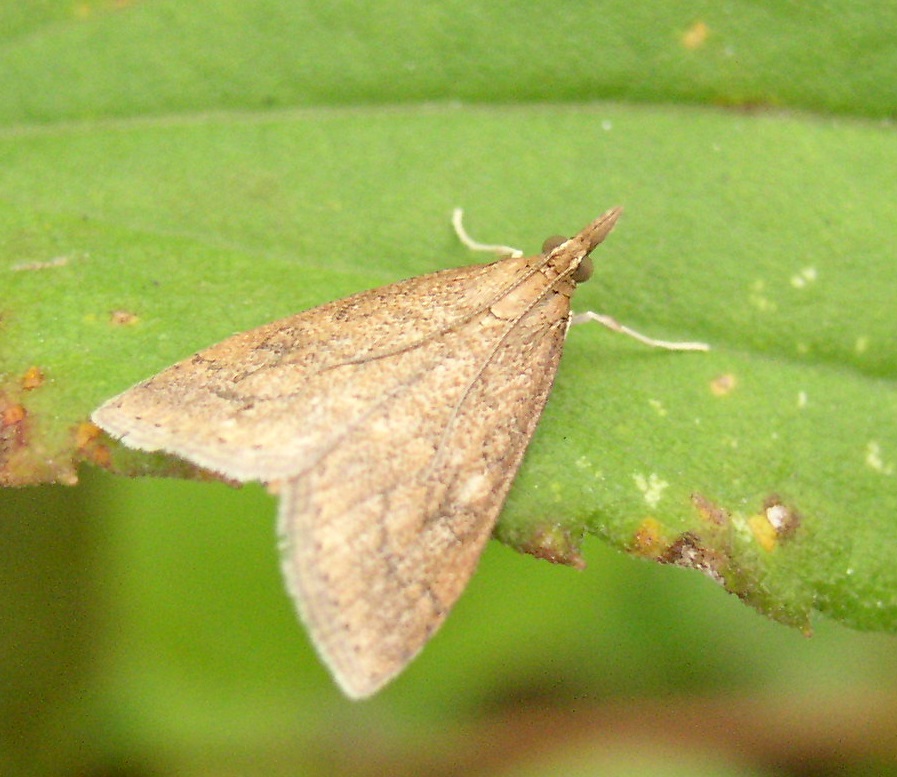Pyraloidea on:
[Wikipedia]
[Google]
[Amazon]
 The Pyraloidea (pyraloid moths or snout moths) are a
The Pyraloidea (pyraloid moths or snout moths) are a
Global Information System on Pyraloidea (GlobIZ)
*
Images of Pyraloid Moths in New Zealand
{{Taxonbar, from=Q248419 Lepidoptera superfamilies Obtectomera
 The Pyraloidea (pyraloid moths or snout moths) are a
The Pyraloidea (pyraloid moths or snout moths) are a moth
Moths are a group of insects that includes all members of the order Lepidoptera that are not Butterfly, butterflies. They were previously classified as suborder Heterocera, but the group is Paraphyly, paraphyletic with respect to butterflies (s ...
superfamily containing about 16,000 described species
A species () is often defined as the largest group of organisms in which any two individuals of the appropriate sexes or mating types can produce fertile offspring, typically by sexual reproduction. It is the basic unit of Taxonomy (biology), ...
worldwide, and probably at least as many more remain to be described. They are generally fairly small moths, and as such, they have been traditionally associated with the paraphyletic
Paraphyly is a taxonomic term describing a grouping that consists of the grouping's last common ancestor and some but not all of its descendant lineages. The grouping is said to be paraphyletic ''with respect to'' the excluded subgroups. In co ...
Microlepidoptera.
This superfamily used to contain the Hyblaeidae, Thyrididae, Alucitidae (plus Tineodidae), Pterophoridae, and Pyralidae
The Pyralidae, commonly called pyralid moths, snout moths or grass moths, are a family of Lepidoptera in the ditrysian superfamily Pyraloidea. In many (particularly older) classifications, the grass moths (Crambidae) are included in the Pyr ...
. The first four families are now each split off as a distinct superfamily.
Nowadays, Pyralidae are usually split into the Pyralidae sensu stricto and the Crambidae
Crambidae comprises the grass moth family of lepidopterans. They are variable in appearance, with the nominal subfamily Crambinae (grass moths) taking up closely folded postures on grass stems where they are inconspicuous, while other subfamilies ...
, as both groups have been shown to be monophyletic
In biological cladistics for the classification of organisms, monophyly is the condition of a taxonomic grouping being a clade – that is, a grouping of organisms which meets these criteria:
# the grouping contains its own most recent co ...
and a sister group
In phylogenetics, a sister group or sister taxon, also called an adelphotaxon, comprises the closest relative(s) of another given unit in an evolutionary tree.
Definition
The expression is most easily illustrated by a cladogram:
Taxon A and ...
.
Some genera (e.g. '' Micronix'' and '' Tanaobela'') still defy easy classification and have been variously assigned to the Crambidae or the Pyralidae.
Among all Lepidoptera
Lepidoptera ( ) or lepidopterans is an order (biology), order of winged insects which includes butterflies and moths. About 180,000 species of the Lepidoptera have been described, representing 10% of the total described species of living organ ...
, pyraloids show the most diverse life history adaptations. The larvae of most species feed on living plants either internally or externally as leaf rollers, leaf webbers leaf miners, borers, root feeders, and seed feeders. Some species live parasitically in ant
Ants are Eusociality, eusocial insects of the Family (biology), family Formicidae and, along with the related wasps and bees, belong to the Taxonomy (biology), order Hymenoptera. Ants evolved from Vespoidea, vespoid wasp ancestors in the Cre ...
nests ( Wurthiini), prey on scale insects (certain Phycitinae), or live in the nests of bees (Galleriinae
The Galleriinae are a subfamily of snout moths (family (biology), family Pyralidae) and occur essentially worldwide, in some cases aided by involuntary introduction by humans. This subfamily includes the wax moths, whose caterpillars (waxworms) a ...
). The larva
A larva (; : larvae ) is a distinct juvenile form many animals undergo before metamorphosis into their next life stage. Animals with indirect development such as insects, some arachnids, amphibians, or cnidarians typically have a larval phase ...
e of the Acentropinae are adapted to life under water, and certain Phycitinae and Pyralinae
The Pyralinae are the typical subfamily of snout moths (family (biology), family Pyralidae) and occur essentially worldwide, in some cases aided by involuntary introduction by humans. They are rather rare in the Americas however, and their divers ...
are adapted to very dry environments and their larvae feed on stored food products. Others feed on animal detritus such as carrion and feces
Feces (also known as faeces American and British English spelling differences#ae and oe, or fæces; : faex) are the solid or semi-solid remains of food that was not digested in the small intestine, and has been broken down by bacteria in the ...
.
With such a variety of living habits, pyraloids are used in biodiversity studies. Some species are of economic importance, e.g.:
* rice stem borers ('' Chilo'' spp.; '' Scirpophaga'' spp.)
* sod grass webworms (different species of Crambinae
Crambinae is a large subfamily of the lepidopteran family Crambidae, the crambid snout moths. It currently includes over 1,800 species worldwide. The larvae are root feeders or stem borers, mostly on grasses. A few species are pests of sod grasse ...
)
* Indian meal moth ('' Plodia interpunctella'')
* European corn borer ('' Ostrinia nubilalis'')
* Indo-Australian coconut spike moth ('' Tirathaba rufivena'')
* Cacao moth ('' Ephestia elutella'')
* Mediterranean flour moth ('' Ephestia kuehniella'')
* wax moths ('' Achroia grisella'', '' Galleria mellonella'')
* rice moth ('' Corcyra cephalonica'')
* beet webworm ('' Spoladea recurvalis'')
* European pepper moth ('' Duponchelia fovealis'')
* legume pod borer ('' Maruca vitrata'')
* eggplant fruit borers (''Leucinodes
''Leucinodes'' is a genus of moths of the family Crambidae. It was first described by Achille Guenée in 1854.
''Leucinodes'' species have been documented as eggplant fruit borers. They are occasionally imported by accident from African and Asia ...
'' spp.).
References
External links
Global Information System on Pyraloidea (GlobIZ)
*
Images of Pyraloid Moths in New Zealand
{{Taxonbar, from=Q248419 Lepidoptera superfamilies Obtectomera